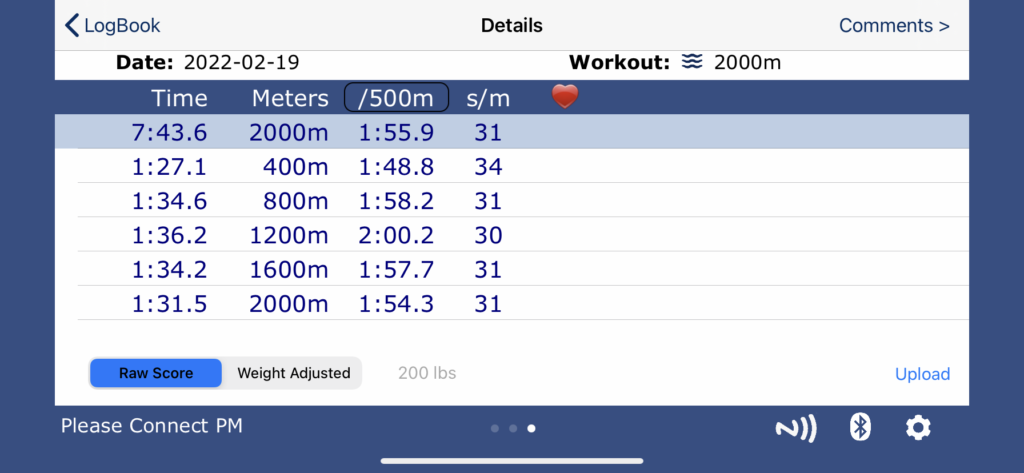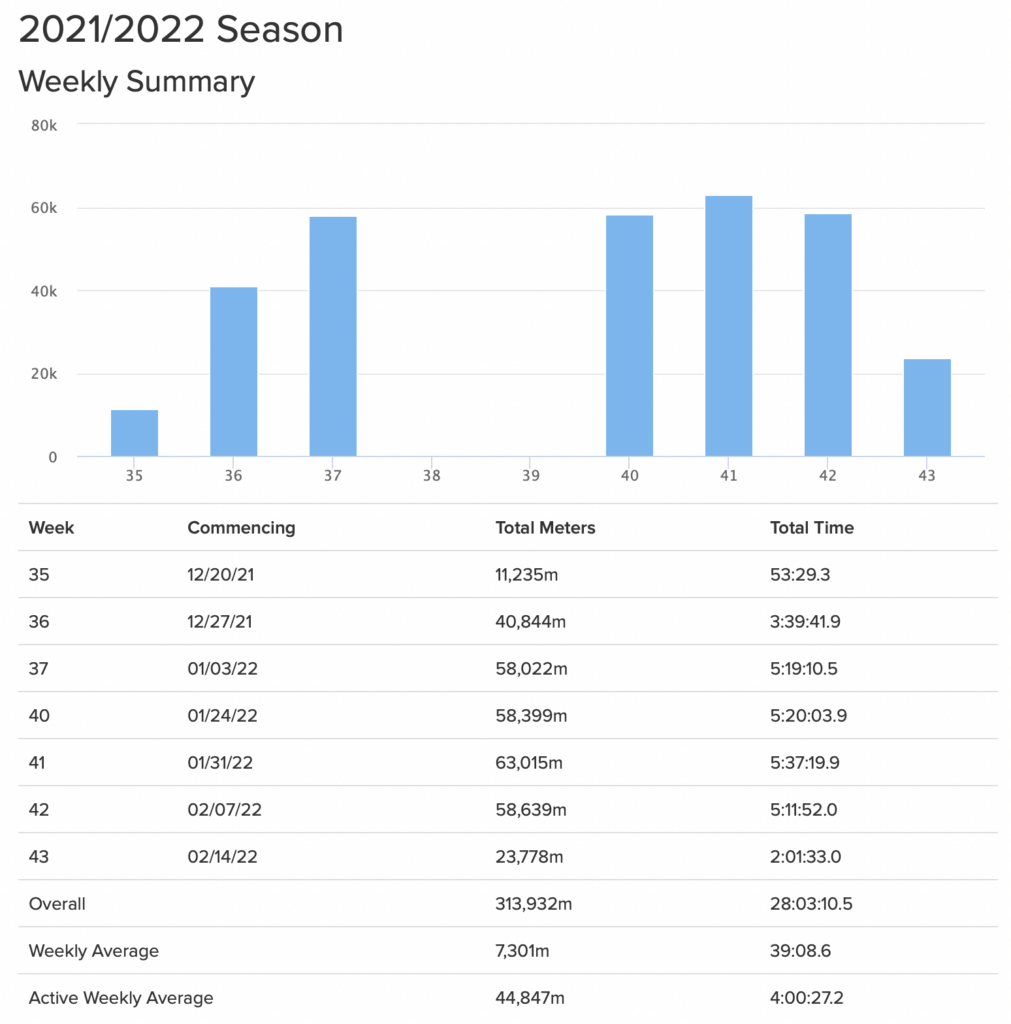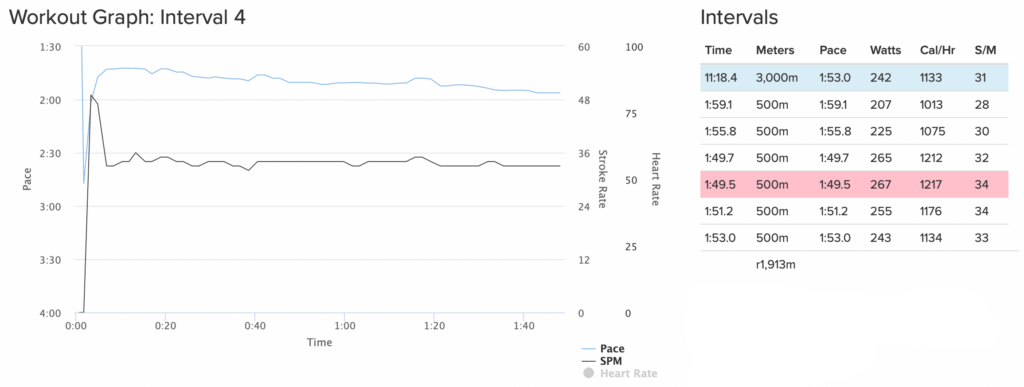Just before Christmas I got an indoor rowing machine. The goal of getting the rower was to give me a way to exercise aerobically during the winter months. My left knee has no meniscus since it was removed surgically 4 years ago. This means that running is over for me, unless I want to accelerate and exacerbate arthritis. Riding a bike in sub freezing temperatures can be done but its not exactly fun. Then there is the chance of snow and ice which can be perilous at 20+ mph.
So I got the rower with the intent of using Apple Fitness+ rowing workouts to get my morning workouts in. I prefer to workout in the morning because my brain isn’t totally turned on and distracted yet. This lets me get into the flow of a workout much more easily. Then I have the after glow benefits of the workout for the rest of the day. This helps me stay focused and comfortable while I am doing work or just relaxing on a day off.
I quickly learned that the Apple Fitness+ rowing workouts are mostly anaerobic workouts with pretty high stroke rates. These types of workouts are useful for building strength and getting faster, but they do not build your aerobic fitness. Aerobic fitness training means that the body is using oxygen as fuel and has been shown to have a myriad of health benefits, both physically and mentally. Basically aerobic workouts are slower and easier than anaerobic workouts.
So I needed to find an alternative for rowing workouts. I have found that having some type of structure for working out helps me stay committed to working out, lets me see progress in my fitness, and it reduces the chance for injury. Over the years I have followed a lot of different workout plans for a variety of exercises and goals.
One of my goals with rowing is to do a marathon distance row of 26.2miles or 42.195 km. That will be a multi hour effort that will be best approached with a solid base of fitness and experience on the rower. I am not aiming to compete with anyone except myself to try and complete the distance. I want to do it prepared so that I can finish it and avoid injury.
So I started searching for marathon training plans and found this thorough guide, which is a bit on the intense side of what I am planning to do. However it starts off by recommending that anyone new to rowing should start by focusing on a shorter distance first, like 2km. So I searched for 2km training plans and found this one. Its pretty straight forward and would give me a solid base to then move onto training for the Marathon later.
Just before our Mexico River trip I did the first week of the 12 week short distance program. I am really glad I did because we did a lot of rowing on the trip due to there being a lot of flat water. The immediate difference to notice in this short distance training program is that there are a lot of interval workouts.
Interval workouts are anaerobic workouts focused on getting you faster and stronger. This may seem confusing since I said that I wanted to do aerobic workouts. However to build a strong base when first starting a new exercise it is helpful to mix things up. The mixing things up is something that the Apple workouts did not do since there is no long term defined work out plan. With this 12 week short distance plan I do pure aerobic workouts 2 times a week. Then 4 times a week the workouts have an aerobic warmup and cooldown with interval training in the middle.
The intervals are hard but they are helping me improve my form and understanding of rowing metrics significantly. They are also making me feel much stronger. My upper back, the lower half of my biceps, and my upper forearms feel especially stronger. This makes sense as I don’t do a lot of regular exercise that focuses on those muscles. In biking they get used but just to hold my torso up. They are not propelling me down the road, that is done by the legs.
When I started rowing last month my form was not great and I didn’t know about strokes per minute and pace per 500m. Now I feel that my form is pretty solid and I have a much better grasp of how strokes per minute and pace work based on my goal with the workout. The metrics is one thing that I am really enjoying about rowing. The rowing machine has a surprisingly sophisticated computer that measures almost everything happening when you pull the handle.
One of my favorite metrics is the average and peak force metrics. These tell you how hard you are pulling and it means that the rower is a power meter. For non sporting people a power meter may not mean much but in the last 10 years of so power meters have taken the sports training world by storm. Usually they are installed on a bike and allow for a more refined measurement of effort than the traditional heart rate meter.
Measuring effort only with heart rate is problematic for a few reasons. The main one is that it is a measurement of effort after the effort has been applied. There is always a delay between the muscular effort applied and the resulting raise in heart rate. Another reason that heart rate measurement is less than ideal is that your heart rate changes based on a lot of factors besides the exercise. Dehydration, lack of rest, and the stress of daily life all affect our heart rates and therefore can make it difficult to get a good idea of what your effort actually is.
With a power meter all of those issues are removed since the measurement is force applied to the machine and displayed as a force curve. The force curve lets me see in real time how much force I am applying and when. I can see if my transition from using my legs to my back and then arms is a smooth process or if I need to transition better.
Yes the display looks like a graphing calculator from high school but I kinda love the simplicity of it. Maybe there is some nostalgia too. There is also an iPhone app for my rower that lets me see even more data while I am rowing. Its partially a nerd fest and workout session in one and I am kinda hooked. More to come.





